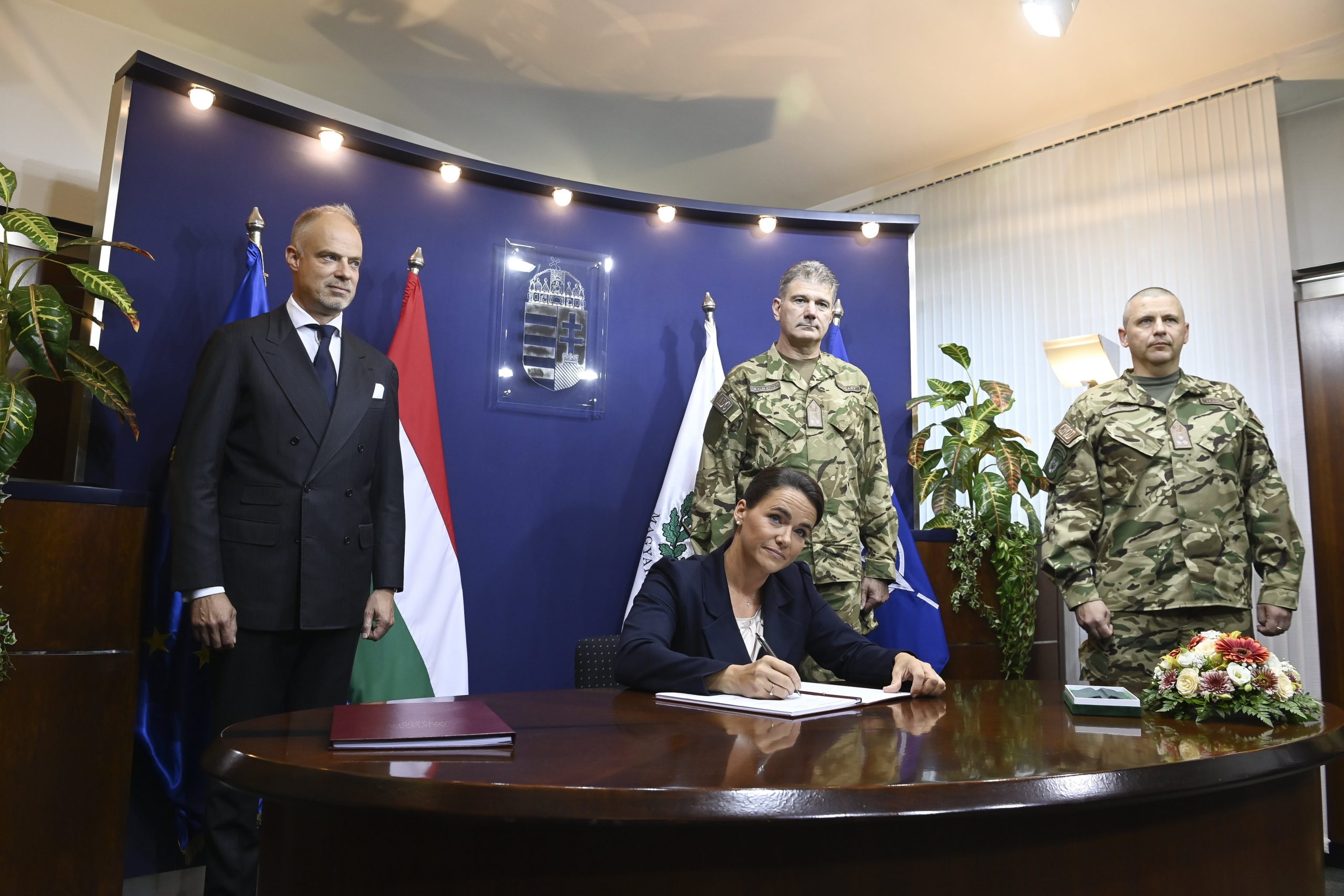
The state of emergency, similarly to that introduced during the pandemic, will make it possible for the government to react quickly and to use "all methods at its disposal" to protect Hungary and Hungarians, Orbán said.Continue reading

President Katalin Novák signed the plan for Hungary’s armed defense at the Ministry of Defense in Budapest on Tuesday. Novák took office as President on May 10 and has been commander-in-chief of the Hungarian Armed Forces since then. The President was received at the ministry with military honors by new Defense Minister Kristóf Szalay-Bobrovniczky and Lieutenant General Romulusz Ruszin-Szendi, commander of the Hungarian Armed Forces.
This article was originally published on our sister-site, Ungarn Heute.
As the Commander in Chief of the Hungarian Defence Forces, I approved today the country’s new armed defense plan. It is our duty as leaders to guarantee the security of the Hungarian people. The continuous development of the defense forces and the implementation of a new defense plan are serving this purpose. The National Armed Defence Plan regulates the tasks of the Hungarian Defence Forces in a situation that threatens the security of our country. The war that has been raging in our neighborhood for 97 days and the changing security environment have justified a review of the existing guidelines. I am thankful for the service of the Defense Forces.”
Novák wrote on her Facebook page.
The country’s armed defense plan is required to be in conformity with the national defense plan, Romulusz Ruszin-Szendi told public media after the ceremony, noting that it is the duty of Hungary’s president to know and sign the document.
The Hungarian Armed Forces have the task of analyzing the challenges that may affect the country, from the smallest incident to war,”
he added.
Major General István Kun Szabó, the Head of the Defense Directorate of the Office of the President of the Republic, noted that the president on Tuesday signed a defense plan which had been revised in light of the National Security Strategy adopted in 2020 and the National Military Strategy approved the following year.
The Hungarian Defense Plan defines the tasks of the Hungarian Armed Forces in maintaining law and order and protecting the country’s critical infrastructure and cyberspace. The plan is submitted by the Minister of Defense and approved by the country’s President.
The Hungarian Armed Forces launched a defense and force development program in 2017. The Zrínyi 2026 defense and armed forces development program aims to make the armed forces the most modern in the region by 2026. In recent years, military equipment has been continuously acquired, and the military part of the program, which concerns soldiers, has also been a priority. In the last four years, the number of professional, contract, and reserve forces in the armed forces has increased every year. Patriotic defense education has also continued: some 110 schools have already joined the cadet program, and agreements have been signed with a number of universities.
As we have already reported, the government declared a state of emergency due to the war last week. The first measure of the state of emergency was Prime Minister Viktor Orbán’s announcement that the government would take additional profits away from banks and multinational companies.
The special taxes announced by the Prime Minister will go into the utility protection fund and defense fund established by the government to ensure that the utility cost reduction program and defense development can be funded over the long term.
Source: MTI
Featured image via Szilárd Koszticsák/MTI